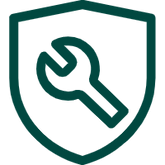Safety Tips for Operating a Mini Chainsaw at Home
Mini chainsaws have become increasingly popular for home gardening, DIY projects, and small woodcutting tasks. Their compact size and convenience make them ideal for trimming branches, cutting firewood, and other light-duty applications. However, like all power tools, mini chainsaws can be dangerous if not used properly. Follow safety rules to prevent harm is essential.
In this article, we will provide comprehensive safety tips for operating a mini chainsaw at home. These guidelines help all users work safely and effectively.
1. Why Safety Matters with Mini Chainsaws
Despite their small size, mini chainsaws are powerful tools that can cause serious injuries. The high-speed chain can easily cut through wood—and just as easily through skin, bones, and other materials. Common risks include:
- Kickback: The sudden, upward motion of the chainsaw if the tip hits a hard object.
- Cuts and lacerations: Direct contact with the moving chain.
- Flying debris: Wood chips or broken chain parts that can fly toward the operator.
- Noise and vibration: Prolonged use may cause hearing or arm damage.
- Electric shock: For corded models, if used near water or with damaged cords.
Stick to safety rules, and you’ll reduce these risks a lot. Plus, you’ll keep your work area safe and sound.
2. Essential Safety Gear for Mini Chainsaw Operation
Before starting your mini chainsaw, always wear appropriate personal protective equipment (PPE):
- Safety Glasses or Goggles: Protect your eyes from flying wood chips and dust.
- Cut-Resistant Gloves: Improve grip and protect your hands from cuts and vibrations.
- Hearing Protection: Use earplugs or earmuffs, especially for prolonged use.
- Steel-Toed Boots: Protect your feet from falling branches or accidental drops.
- Long Pants and Sleeves: Protect your skin by wear durable clothing.
3. Pre-Operation Safety Checklist
Before you even turn on your mini chainsaw, complete these steps:
- Inspect the Chainsaw: Check for any damage to the chain, guide bar, housing, or cord (for electric models). Ensure all parts are secure.
- Check the Chain Tension: A loose chain can derail; a too-tight chain can break. Follow the producer's instructions for proper tension.
- Sharpen the Chain: A dull chain requires more force to cut, increasing the risk of kickback. Always use a sharp chain.
- Lubricate the Chain: You need to fill the chain oil reservoir with oil to prevent overheating and wear.
- Plan Your Work Area: Clear the area of tripping hazards like rocks, branches, or cords. Keep bystanders, children, and pets at a safe distance.
- Check the Weather: Avoid using a chainsaw in wet or windy conditions. This can make surfaces slippery and reduce control.
4. Safe Operating Practices
When you are ready to use the mini chainsaw, follow these guidelines:
- Firm Grip and Stance: Hold the chainsaw firmly with both hands. Stand with your feet shoulder-width apart for balance.
- Be Aware of Kickback Zone: Never let the upper tip of the guide bar contact any object. This is the most common cause of kickback.
- Cut at Waist Height: Avoid cutting above shoulder level, as this reduces control and increases fatigue.
- Never Use One-Handed: Always operate the chainsaw with both hands for maximum control.
- Stay Alert: Focus on the task. Do not operate the tool if you are tired, distracted, or under the influence of medication or alcohol.
- Power Off When Not Cutting: A corded mini chainsaw, you should turn it off first, then unplug it. If it’s cordless, take out the battery. Do this when carrying the saw far. Do this during breaks too.
5. Post-Operation and Maintenance
Safety continues after you finish cutting:
- Allow to Cool Down: Before storing, let the chainsaw cool down completely.
- Clean the Tool: Remove sawdust and debris from the chain, guide bar, and air vents.
- Proper Storage: Store the mini chainsaw in a dry, locked place, out of reach of children. For cordless models, remove the battery before storage.
- Regular Maintenance: Follow the producer's schedule for sharpening the chain, replacing the oil, and inspecting parts.
6. Conclusion
A mini chainsaw is a handy and efficient tool for various home and garden tasks. However, safety must always be your top priority.
Check the right protective gear and wear it. Inspect your mini chainsaw before each use. Follow safe operating steps every time. Keep your equipment well-maintained.
Do these things, and you can lower risks. You’ll also enjoy using your mini chainsaw safely, with no accidents.
No project is so urgent that it is worth sacrificing safety to complete it. Take your time, respect the tool, and prioritize your well-being.




